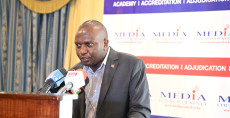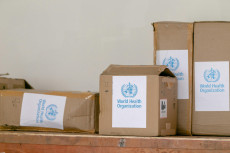- Kenyan PhD and Masters students know Turnitin—that dreaded ‘assumably plagiarism’ software which highlights everything in your document as plagiarized including the common university narration on cover page, the chapter headings, all references, direct quotations, students name and registration numbers and the list is long.
Did you know that with as low as 1% similarity index from Turnitin, a document can be highly plagiarized? The American company Turnitin, a subsidiary of Advance Publications has put it clearly that Turnitin is not a plagiarism software, it is a similarity index checker—but Kenyan universities still insist that the software be used to check plagiarism.
Even when the plea against universities using Turnitin to check plagiarism is everywhere, many PhD and Masters’ students have failed to graduate and more will be locked this year courtesy of Turnitin.
That is why, most likely, our academic integrity is at hand. We refuse to change old ways and thoughts.
Kenyan PhD and Masters students know Turnitin —that dreaded ‘assumably plagiarism’ software which highlights everything in your document as plagiarized including the common university narration on cover page, the chapter headings, all references, direct quotations, students name and registration numbers and the list is long.
The output alone should send a clear message that something is wrong. But no one can blame Turnitin because their output after scanning any document is not named “plagiarism report”, it is clearly named “similarity index” and their report has sources which are broken down as “% match.”
Read More
Turnitin, in their support center page does not even agree with our universities claims. It clearly states “the Turnitin Similarity Report does not define whether or not a student’s work is plagiarized.”
Many Kenyan universities will ignore this and insist that Turnitin similarity score is plagiarism—and go ahead to deny students from defending their thesis and graduating.
So, what exactly is similarity index?
Is it plagiarism? The answer is, a big, no? The two are as far apart as heavens is from the earth.
This study from the US The National Center for Biotechnology Information clarifies that “Turnitin is a software that identifies the matched material by checking the electronically submitted documents against its database of academic publications, internet, and previously submitted documents. Turnitin provides a ‘similarity index,’ which does not mean plagiarism.”
The study concludes in clear terms that “Turnitin is not a plagiarism detection tool, but it is a text matching tool that provides the similarity of the document/s with already published work.”
Another source states that “Plagiarism involves the unethical use of someone else’s work without proper acknowledgment, whereas similarity index simply points out overlapping text.”
Using Turnitin to rule out plagiarism is an abuse of academia. This debate, I know, will be emotional and controversial. Actually, because of misuse of Turnitin in academia, our libraries are likely full of plagiarized theses and dissertations. Let me explain why.
To beat around Turnitin, you just need to paraphrase a thesis. That’s the cure—as I write, scores of students are paraphrasing their thesis and they will submit and they will pass the set percentages.
For example, a university student can pick an English thesis and translate it into Kiswahili and Turnitin will give it a big thumb. Another can pick a whole thesis in the library and paraphrase it so that as long as there are no matching words and texts, the similarity checker will pass it.
What then is plagiarism?
Plagiarism is about stealing an idea, not a string of words, terms or texts. Oxford dictionary defines it as “the practice of taking someone else’s work or ideas and passing them off as one’s own.”
From the university of Oxford website, plagiarism is “Presenting work or ideas from another source as your own, with or without consent of the original author, by incorporating it into your work without full acknowledgement.”
Many Kenyan universities have sunk millions into subscriptions of Turnitin. It is not a cheap software, but we disregard their disclaimers and our experience with the software and prefer to go with their marketing stints.
How can we eliminate or minimize plagiarism?
The instructor or supervisor is the best plagiarism checker. Ensuring that student properly acknowledged sources and instill the proper way of academic writing, referencing and citing ideas and knowledge materials that candidates use to put together their dissertations is the best way.
Before an institution spend millions on these checkers, they should do enough research and get informed advice on the suitability, credibility, and assurance. Moreover, the checkers are supposed to be used as supplementary, not substitutes for training and guiding graduate students on proper ways of maintaining integrity in academic research.
Further, paraphrasing a document so as to reduce matching texts or similarity score has nothing to do with reducing plagiarism.
Finally, we are headed to another season of defenses for Masters and PhD students who are scheduled to graduate from now through December 2024. Turnitin is embedded in our universities policies as plagiarism checker. Can our universities correct the wrongs and do the right thing?
- MORE READING LINKS
- 1. https://populi.co/blog/2023/04/plagiarism-vs-similarity/
- 2. https://writersking.com/plagiarism-and-similarity/
- 3. https://academic-master.com/what-is-the-difference-between-plagiarism-and-similarity-index/
- 4. https://www.ncbi.nlm.nih.gov/pmc/articles/PMC7358069/
Dr Ndonye is the Managing Director at Editon Consortium Publishing.



-1767174925-md.jpg)





-1767174925-sm.jpg)

